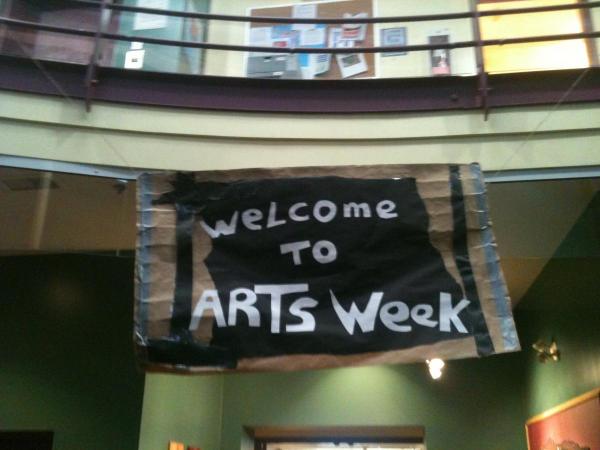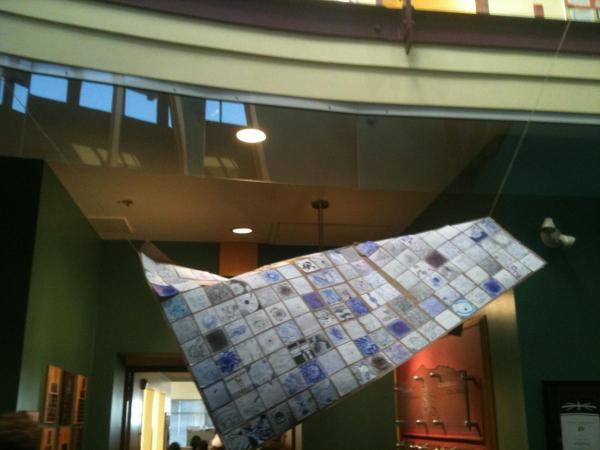
When I came in this morning to school, the poster in the photo above had fallen down. I noticed it, and thought to myself, "I should fix that." I went and dropped off my stuff, and when I came back to the poster, one of our students was standing there staring at the poster. He said to me, "It looks like the poster came undone here," and he pointed to a spot on the back of the poster. "I’m going to fix it," he said.
"Do you need any help?" I responded.
"Nah, I can do it. Thanks anyway," he said.
Later that morning, the student said "It’s a bit crooked, but it’s up." "It doesn’t matter if it’s a bit crooked," I replied, "The most important thing is that it’s up."
I could have stepped in and solved this problem for my student, but then he wouldn’t have learned how to solve it himself. "Be less helpful," says Dan Meyer of the math class, but of course the same is true all over the place in education. The objective isn’t to show students how to solve problems, our objective is for students to learn how to solve problems. Sometimes our role is to stand back and let students solve problems for themselves. Will they always come back with the "perfect" solution? Probably not, but they will have learned more in the process.
Update:

So it turns out the solution the student tried didn’t work. When I talked to him, he pointed out the flaw in his solution, and suggested a solution. In other words, the problem he solved gave him feedback directly as to whether or not his solution worked.
whitecorp says:
“Be Less Helpful” sounds great, but over here in Singapore students are spoon fed so much I doubt they will survive if we employ such an approach. Peace.
February 24, 2012 — 10:53 am
David Wees says:
That’s a problem isn’t it? I think that they need even more opportunities to solve problems on their own if they aren’t given opportunities at home. Will they struggle with it? Definitely, but so do our children. It is still worth doing, even if it is difficult.
February 24, 2012 — 1:55 pm
John at TestSoup says:
I find that this is equally true (if not more true/important) when it comes to parenting.
February 24, 2012 — 12:15 pm
Kristen Cobbs says:
I am in school to become an educator, and I know as a parent that it can be very difficult to “be less helpful” when it comes to children/teens. However, it is crucial that we let them figure out there own solutions and learn from the mistakes they make. If a child is constantly told what the answer is, he/she will never learn.
February 25, 2012 — 9:53 pm
LaWana Threatt says:
I really enjoyed reading this post because you gave the student to fix the poster even though you saw the poster had fallen down. I believe that letting students fix problems is a great idea and a great way for students to learn how to problem solve an issue. I like the phrase you mentioned in this post, “Be Less Helpful” because it gives the students the opportunity to become problem-solvers.
February 26, 2012 — 6:18 pm